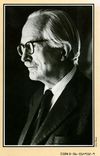Paint, Gold and Blood
Authors [about]:
join in to develop this article! |
Paint, Gold and Blood is a 1989 suspense novel by the British mystery and thriller writer Michael Gilbert, published in England by Hodder and Stoughton and in the United States by Harper & Row. It was Gilbert's 25th novel and....
Plot
Unusual for a Gilbert novel, it is difficult to immediately discern its direction. It begins along typical Gilbert lines with its 16-year-old protagonist, Peter Dolamore, on a bicycle trip along the north coast of France during the Easter holidays from his boarding school in England. Having grown up with his French mother in Paris for his first 11 years he is perfectly bilingual in both French and English. He has just spent a uncomfortable few days at the château of a wealthy Englishman who has a vineyard and an extensive art collection in the Médoc area of Bordeaux—the Englishman is the uncle of Lisa Shilling, an attractive girl who is a close friend of Peter's at his boarding school and who has arranged Peter's visit. Returning by bicycle to Dieppe to catch his return ferry to England, however, he is nearly murdered by two Iranian art thieves in an ancient church on the coast who are engaged in stealing a valuable triptych from a tomb behind which Peter has concealed himself in the dark. Barely escaping, he returns to the modest hotel in which he has spent the previous night; with the aid of a perhaps overly friendly girl at the hotel and of her brother, a French police detective, he is driven to Dieppe and returns to England without further incident. The detective tells him on the way that as the result of the 1979 revolution in Iran there are now many Iranians of different political factions in France, all with competing goals and powerful patrons, and that a policeman's life is thereby complicated. All of this takes up only the first 12 pages of the book.
Reception and/or Appraisal
The New York Times and Kirkus Reviews had very different appraisals of it:
The New York Times: [1]
Kirkus Reviews: .[2]
